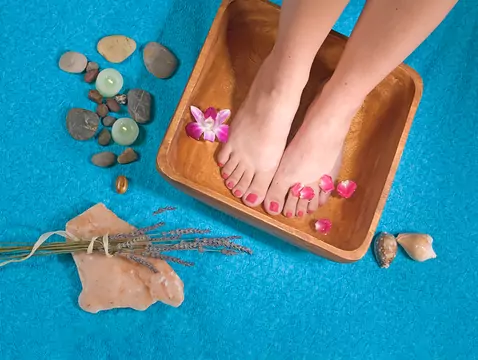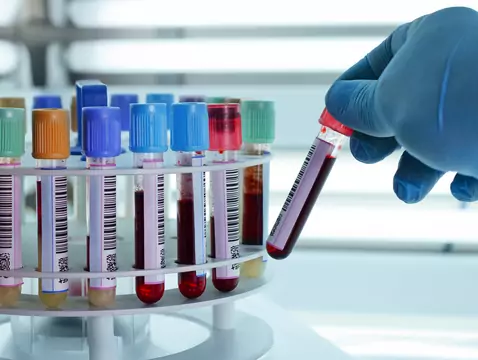Many internal disorders are reflected in the external appearance of the body. By keeping a close eye on your appearance - including the condition of your skin - you can find out for yourself what ailments you are suffering from (even at an early stage) or are prone to. Of course, not all skin changes are symptoms of disease, many of them are related to poor care. However, it is important to remember that the skin is an extremely sensitive barometer of health - it is worth taking a close look at it and learning to read worrying symptoms.
The body is a system of interconnected systems and organs that interact with each other. Many diseases show up on the skin - being able to read the skin not only makes it easier to diagnose, but often also allows the condition to be detected at an early stage.
Skin condition and heart disease
Diseases that are often reflected on the skin as well as the mucous membranes are cardiac conditions. Even slight skin changes may suggest that a disease process is underway or may be a non-specific symptom.
- Brown patches appearing on the skin and, in addition, loss of hair (pubic, axillary) indicate the possibility of iron deposits accumulating in the heart, resulting in cardiomyopathy.
- The presence of yellow tufts (jaundice), which take the form of papules located under the skin (usually the skin of the eyelids), is indicative of an excessive concentration of cholesterol in the blood.
- The sequelae of infective endocarditis are reddish-blue petechiae that resemble splinters (they can also appear under the fingernails and toenails).
- The appearance of erythema on the hands may indicate congestive heart failure.
- Pallor or bruising as well as dry skin with trophic changes (e.g. discolouration, eczema) suggest congenital circulatory failure.
- Symptoms indicative of congenital cyanotic heart defects are clubbed fingers (so-called Hippocrates fingers). They resemble drumsticks in appearance. Characteristic of the disease are thickened entire first phalanges and the nails are convex like the glass of a watch.
- A bloody face or flushing regardless of the weather and physical exertion is a sign of hypertension. Reddening of the skin can occur with aortic regurgitation. If there is a dark red colouration of the face, hands, feet, auricles - this is most likely a cyanotic heart defect. In addition, painful erythema of the extremities, among others, may also occur.
Important! The most common symptom indicative of cardiovascular disease is cyanosis. The violet-blue colour of the skin and mucous membranes (lips, tongue) is the result of a reduction in the oxygen saturation of arterial blood haemoglobin. This process occurs as a result of a decrease in cardiac output (e.g. left ventricular failure, venous thrombosis).
In addition, cyanosis may be indicative of a ventricular septal defect, atrial septal defect or persistent Botall's duct.
In some cases, the condition also involves the extremities - fingers and toes are cold and bruised, and there is swelling and excessive sweating. Cyanosis usually increases with exposure to cold and decreases when the limb is warmed.
Other symptoms of circulatory disorders
Characteristic symptoms of arterial ischaemia of the limbs are trophic changes of the nails and hair loss on the skin of the lower limbs. This is further compounded by, among other things, the appearance of healing ulcers, especially in the most poorly supplied areas such as the heel.
The most common symptom of vascular disease is an increased sensation of warmth with paroxysmal reddening of the extremities (especially the lower extremities). In addition, there is discomfort in the form of burning pain. A network of dilated blood vessels can be seen on the skin and erythema can be observed on the extremities.
Important! Symptoms are recurrent, with attacks lasting from a few minutes to a few hours. They are more frequent after physical exertion, at night and when the ambient temperature is high.

photo: pantherstock
The possibility of circulatory problems may also be suggested by so-called "spider veins" - they are often accompanied by the appearance of varicose veins. Teleangiectasias are indicative of chronic venous insufficiency.
Symptoms of cholesterol embolism include petechiae, ulcerations and purpura. The places where they usually appear are the feet, lower leg, thighs, buttocks (occasionally they occur on the upper limbs).
Important! Cholesterol embolism may also be suggested by the so-called "blue toe syndrome" - however, it should be borne in mind that this symptom may also be indicative of necrosis in the course of thromboembolism. This condition is always associated with long-term smoking and the lesions involve the fingers and toes.
A few more words about..
Diseases (including heart disease) on the skin manifest themselves with various symptoms, including oedema - this condition may affect both limbs, in which case it most probably indicates heart failure. Additional symptoms are pallor, yellowing of the skin, dry skin with trophic changes.
Swelling involving only one limb is most likely due to venous or lymphatic disease.
Important! Edema also occurs in chronic venous insufficiency, deep vein thrombosis and lymphatic vessel insufficiency.
The swellings are usually symmetrical in shape, initially appearing in the lowest areas and increasing in the afternoon and evening (similarly, in advanced bilateral venous insufficiency).









